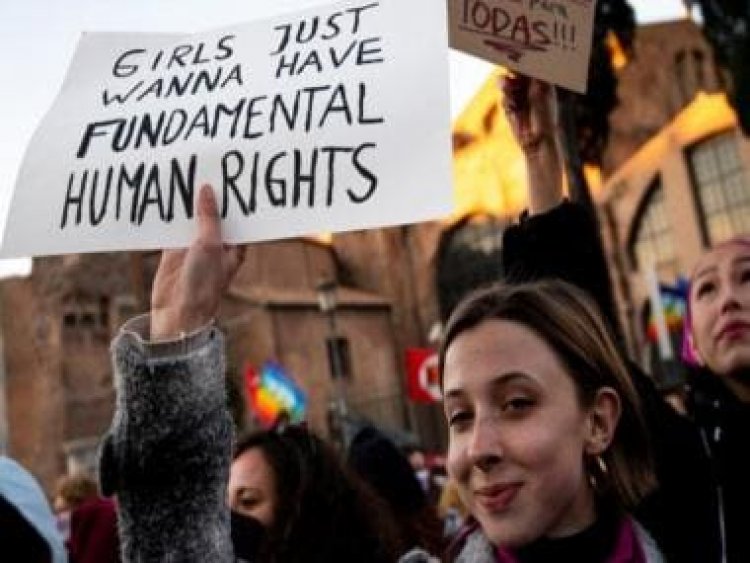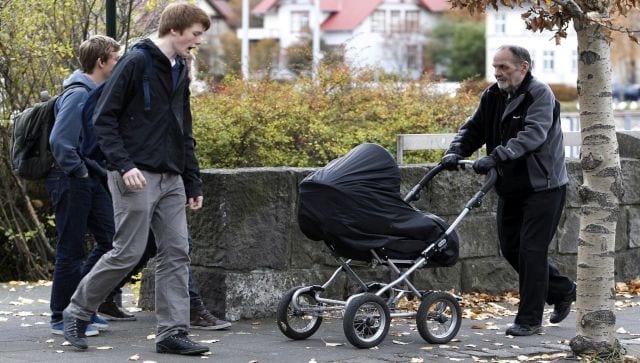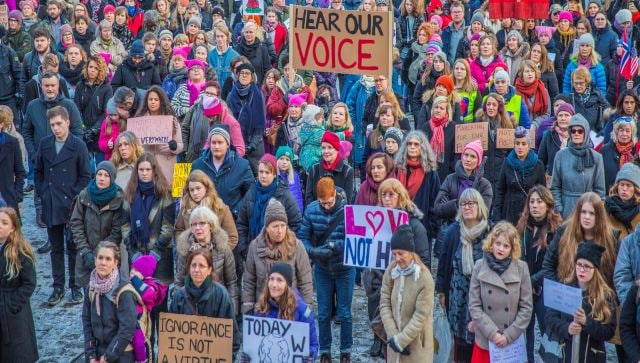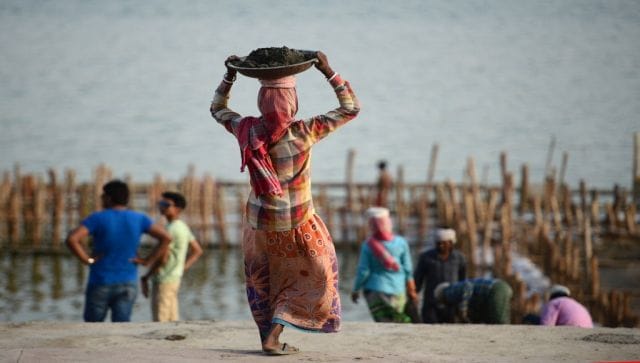International Women’s Day: How perfect are the world’s most gender-equal countries? Where does India stand?
International Women’s Day: How perfect are the world’s most gender-equal countries? Where does India stand?

It’s the day that celebrates women. But a lot is desired to make the world an equal place. Ahead of Internation Women’s Day on 8 March, the United Nations gave us a reality check.
When it comes to women, who constitute half the population of the world, we seem to be taking one step forward and two behind. Speaking to the Commission on the Status of Women, United Nations Secretary-General António Guterres said on Monday that progress toward gender equality is “vanishing before our eyes”. He said gender equality is “300 years away”, according to the latest estimates from UN Women, the body that works toward empowerment. That is a wait too long.
Some countries have been getting their act together, striving to bridge the gender gap. On Women’s Day, we take a look at the most gender-equal countries in the world and where India stands.
According to the World Economic Forum’s “Global Gender Gap Report 2022“, only 68 per cent of the gender gap is closed. But Nordic countries are leading by example closing 90 per cent of the gender gap. They have been doing this year after year, topping the ranking among 146 economies but still they falter.
Iceland is the most gender-equal country in the world and its neighbours Finland, Norway and Sweden are among the top five on the list along with New Zealand. African countries like Rwanda and Namibia have ranked sixth and eighth far ahead of developed economies like the United States (27) and the United Kingdom (22). India comes 135th. The rankings by the World Economic Forum are based on factors including health, education, economic security and political power.
Also read: Happy Women’s Day: Is the celebration merely symbolic?
Iceland
Iceland has entirely closed its gender gap in education and has had a higher share of women as heads of state and parliament over the past 50 years than other countries.
Sharing unpaid work like household chores has been the key to Iceland’s progress. Joeli Brearley, the author of “The Motherhood Penalty“, told the World Economic Forum, “When 90 per cent of women went on strike over this in the 1970s, it showed men there is value in this work, they cannot do their jobs without it. That was the big shift for Iceland in terms of gender equality.”

Since then, the country has continued to work toward equality. A law that came into effect on 1 January 2018 in Iceland made it illegal to pay men more than women. More than 82 per cent of adult women in Iceland participate in the country’s workforce, as of the most recent OECD data from 2021. That’s compared to roughly 68 per cent in the US, reports CNBC.
Also read: International Women’s Day: Being a woman in Narendra Modi’s New India
Finland
Finland has achieved full parity in education and near parity in health. In 2022, there was a drop in parity for labour force participation, a fall in both men’s and women’s estimated earned income and a decline in gender parity in wage equality, according to the report.
However, while fathers in the Nordic countries take more parental leave than those around the world, the divide when it comes to parental labour is wide. In Finland 11 per cent of leave is taken by fathers, according to “The Nordic Gender Effect at Work“ report published in 2019. In Iceland, fathers take 30 per cent of leaves.

Women also invest more time in housework and caring for elderly relatives than men. In the private sector, there are fewer women in senior roles – 32 per cent in Finland but the Working Hours Act which came into effect in 2020 and gave full-time employees the right to decide when and where they will work for at least half of working hours aims to change that.
Norway
In 2002, the Norwegian Parliament amended the 1978 Gender Equality Act which requires both public and private sectors to “promote gender equality”. The law also requires 40 per cent representation of women on executive boards of all public and state-owned companies.
In 2016, it became the first country to establish a gender equality ombud dedicated to a “society where power and influence [are] equally distributed and ensuring that all people regardless of who they are get treated equally”. In 2018, it adopted the Equality and Anti-Discrimination Act to improve the rights of women and other minorities.
The country allows a fully paid maternal leave for 49 weeks.

Despite encouraging policies, the pay gap exists. On average, women’s hourly wages are 89 kroner for every 100 kroner men earn as of March 2021. And only 14 per cent of CEOs in Norway’s largest companies are women.
In 2022, Educational Attainment in Norway was at near full parity with a score of 0.989. 1 means equality has been reached. However, there has been a drop in the participation of women in the workforce. The number of women holding posts as legislators, senior officials and managers has also dropped.
New Zealand
In 1893, New Zealand became the first self-governing country in the world which gave women the right to vote in parliamentary elections. But since then progress has been slow though it does perform better than other nations. It was 26 years later, in 1919, that they paved way for women to enter politics.
Yet between 1935 and 1975, only 14 women were elected to parliament, compared to 298 men. In 1996, the country introduced proportional representation and the number of women in the house began to increase, according to a report in The Conversation.
Today, New Zealand ranks fourth on the list of gender-equal nations. According to the 2022 Global Gender Gap Index, New Zealand has achieved parity in education, health and survival. While wage equality for similar work has increased, research showed that men earned on average 10 per cent more than women in New Zealand. That’s not all. The rate at which women participated in the workforce decreased.
In October 2022, women outnumbered men in New Zealand’s parliament. The legislative body included 60 women and 59 men, but in January this year, Jacinda Ardern resigned as prime minister.
Sweden
Sweden comes first for Economic Participation and Opportunity in the Nordic region, with a high level of female workforce participation, parity in the participation of women in professional and technical roles, and a level of parity in estimated earned income higher than 137 other countries.

Yet the country has a lot to achieve. In 2021, women’s average monthly salaries in Sweden were 90.1 per cent of men’s. According to Statistics Sweden’s bi-annual report on gender equality from 2022, 10 per cent of the companies listed on the Stockholm Stock Exchange had women chairpersons, with 36 per cent of board members women. Thirteen per cent of the companies had women CEOs.
India
India ranked low at 135th place in terms of gender parity despite an improvement of five places since 2021 on better performance in areas of economic participation and opportunity. In 2016, India ranked 87th in the world.
When it comes to political empowerment, India was in 48th place, which is a big fall from 2016 when it ranked ninth. The country also scored poorly in the health and survival category and economic participation and opportunity.
According to the estimates of the World Inequality Report 2022, in India, men earn 82 per cent of the labour income whereas women earn 18 per cent of it.
However, Union Women and Child Development Minister Smriti Irani had last year questioned the “Global Gender Gap Index“ assessment, saying it failed to take into account the political empowerment and financial inclusion of women at the grassroots level.

A new report by World Bank titled “Women, Business, and the Law” has said that little progress has been made across the globe in removing gender inequities in 2022. Women have only 74.4 per cent of the rights that men have on various parameters related to freedom in the workplace. Women have 77.1 per cent of the legal rights that men have the world over.
This latest report said that the pace of new reforms to address gender inequity hit a 20-year-low in 2022. Out of the 190 economies that were covered in the index by the World Bank, only 14 scored a perfect 100. These countries were Belgium, Canada, Denmark, Iceland, Ireland, France, Germany, Greece, Latvia, Luxemburg, Spain, The Netherlands, Portugal, and Sweden, CNBC TV18 reports.
With inputs from agencies
Read all the Latest News, Trending News, Cricket News, Bollywood News,
India News and Entertainment News here. Follow us on Facebook, Twitter and Instagram.
What's Your Reaction?

























































